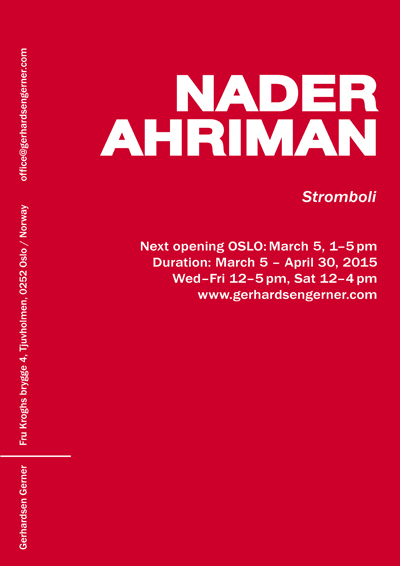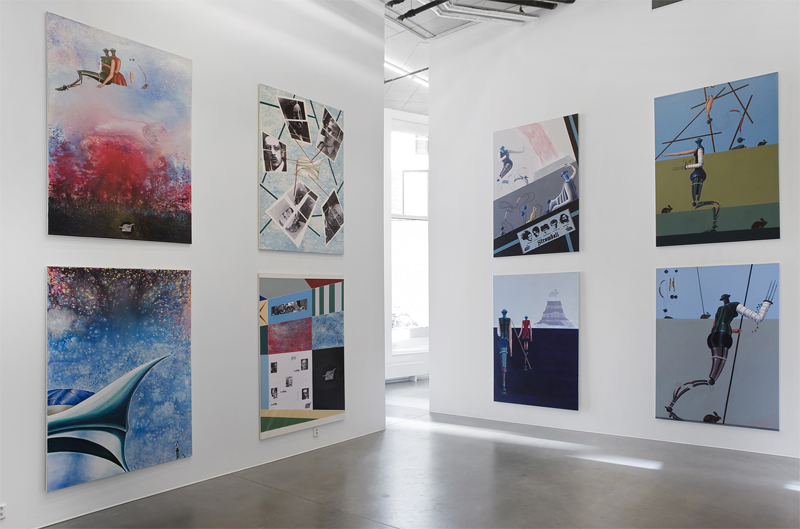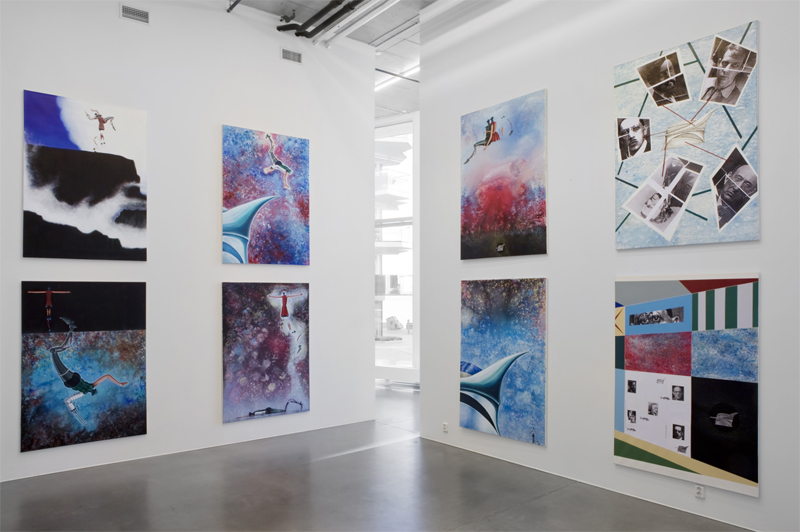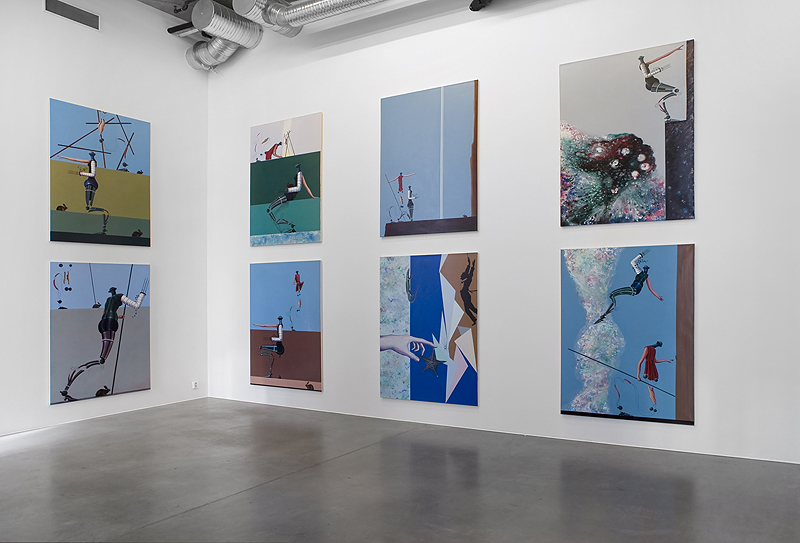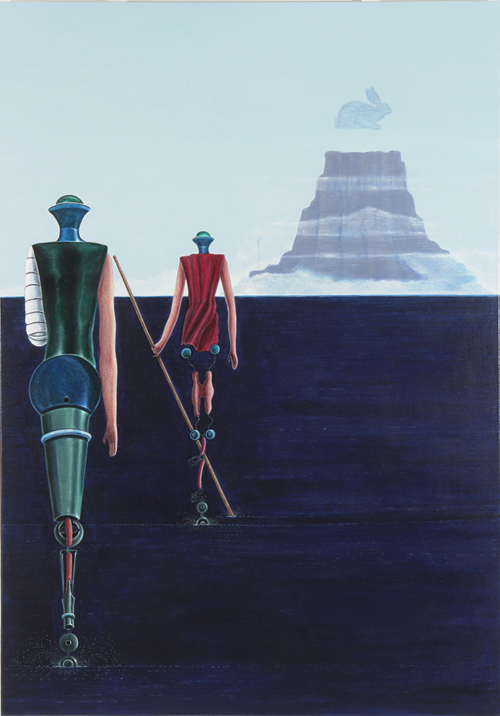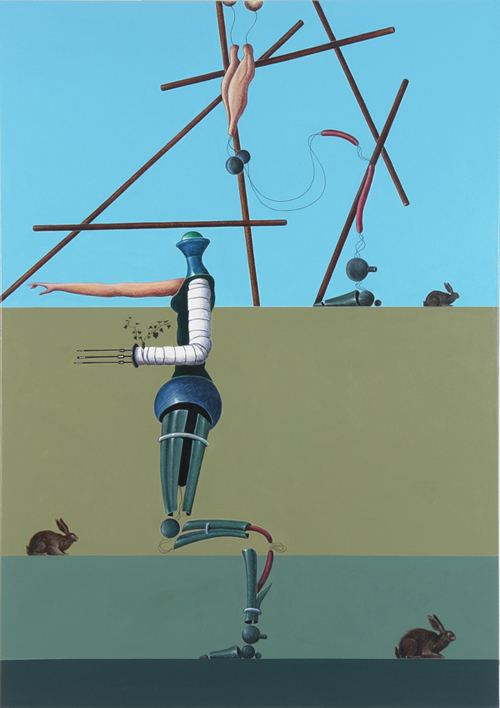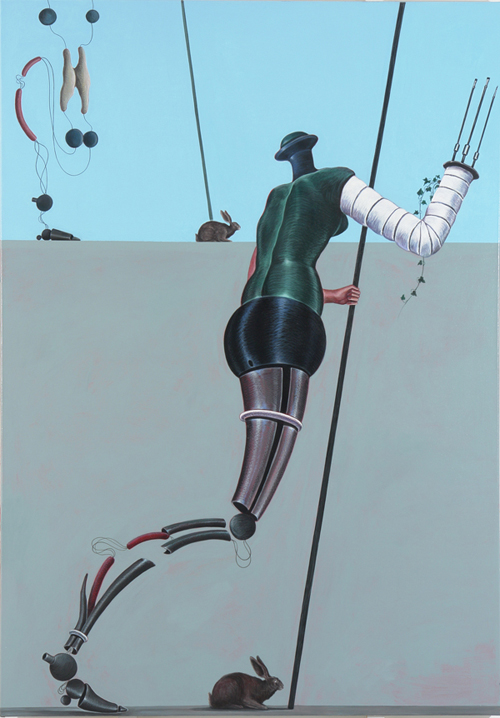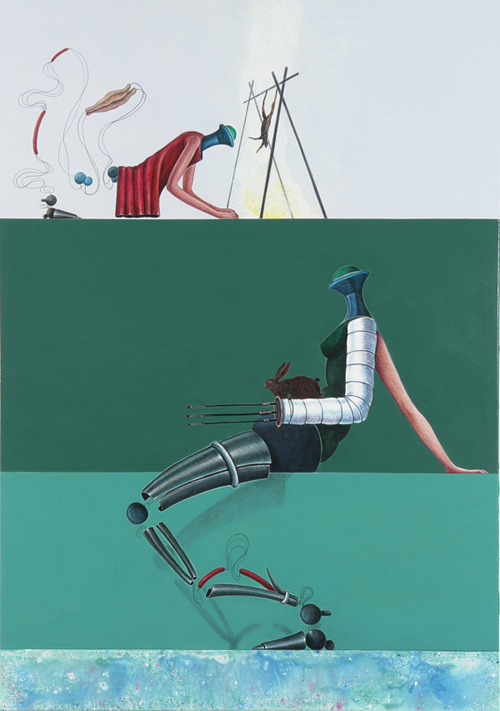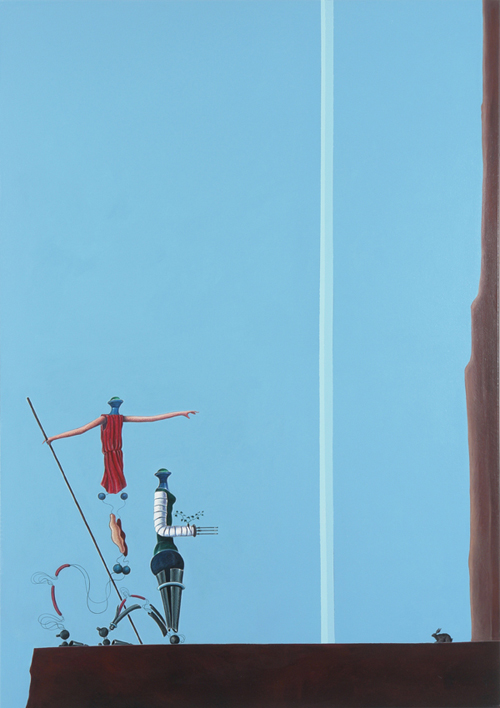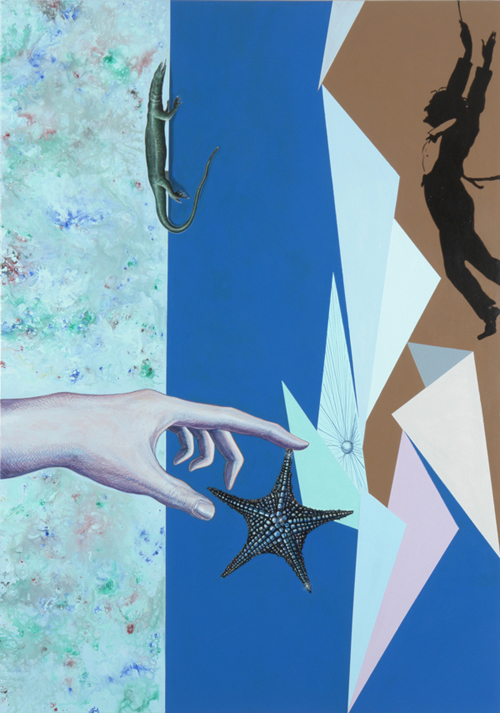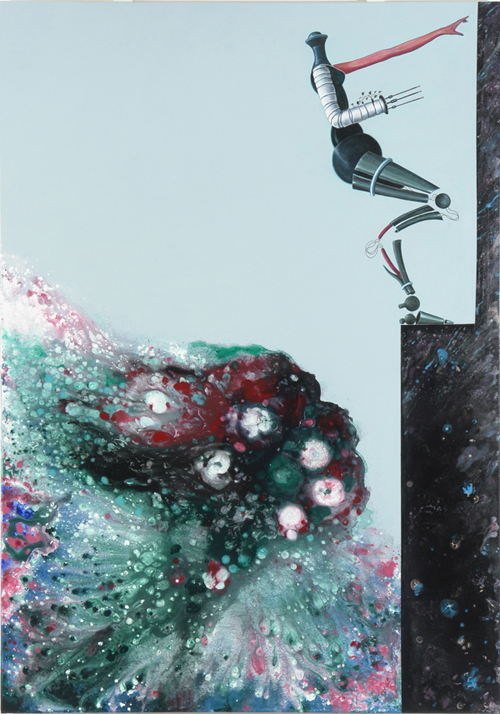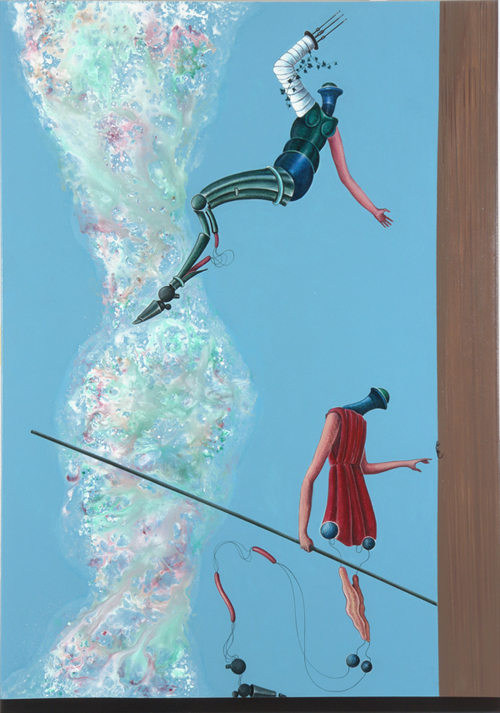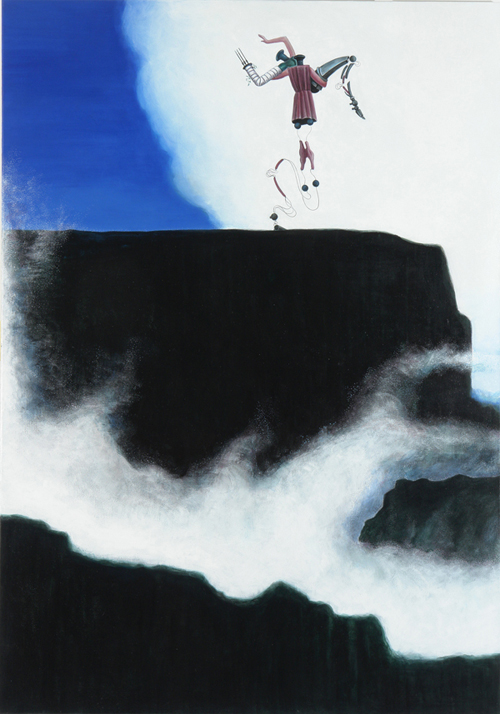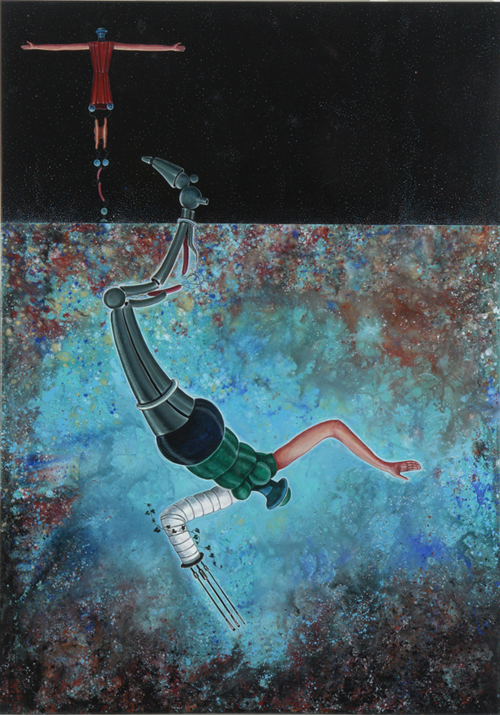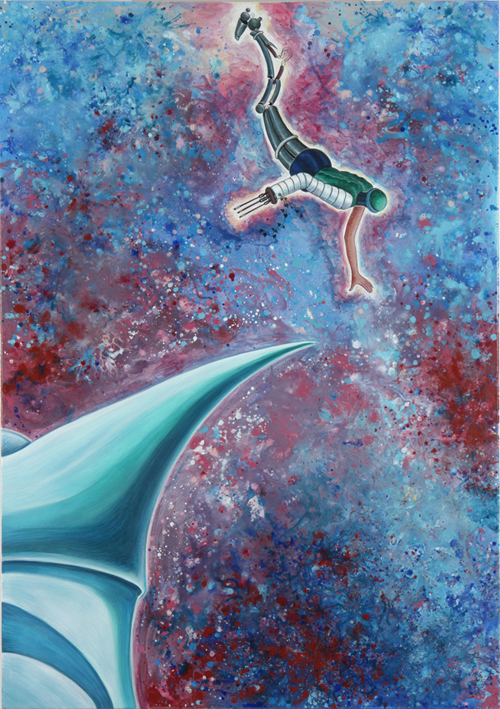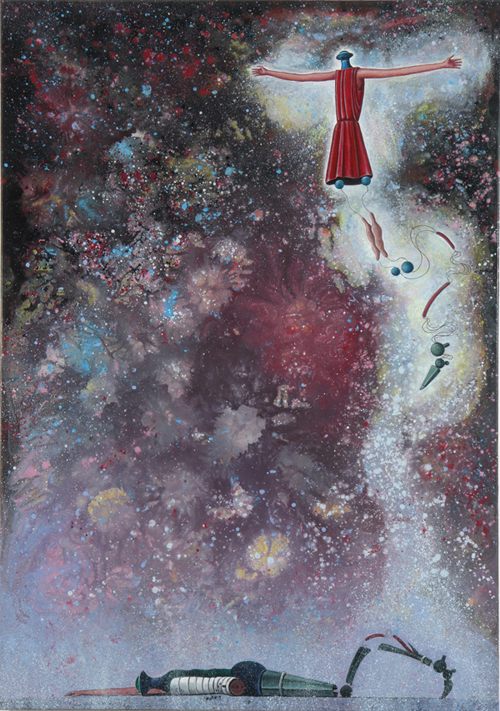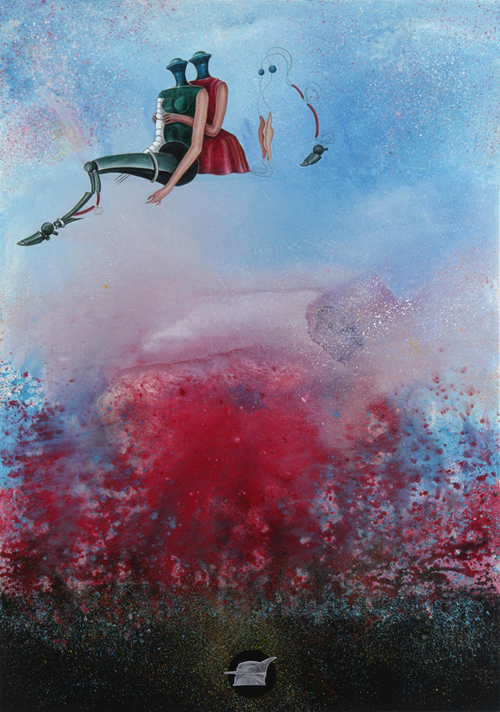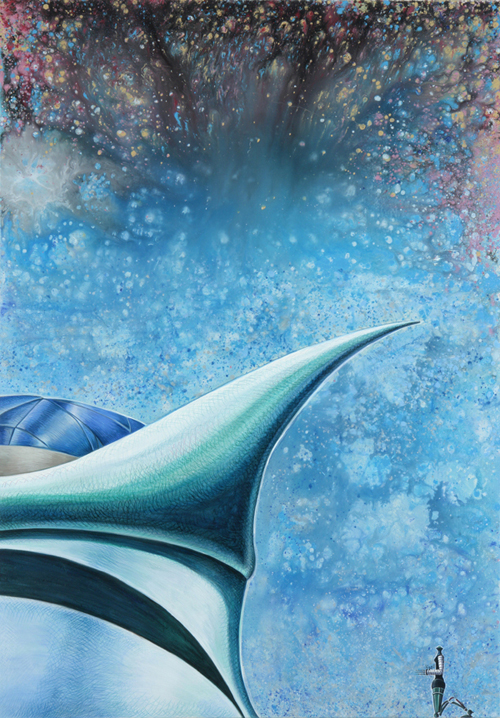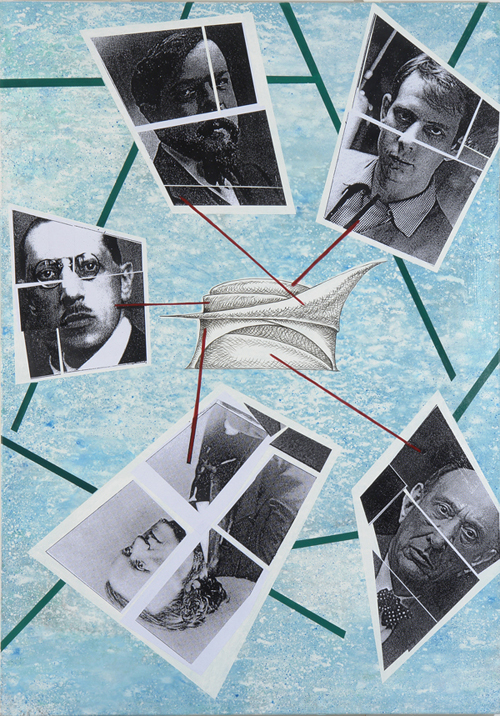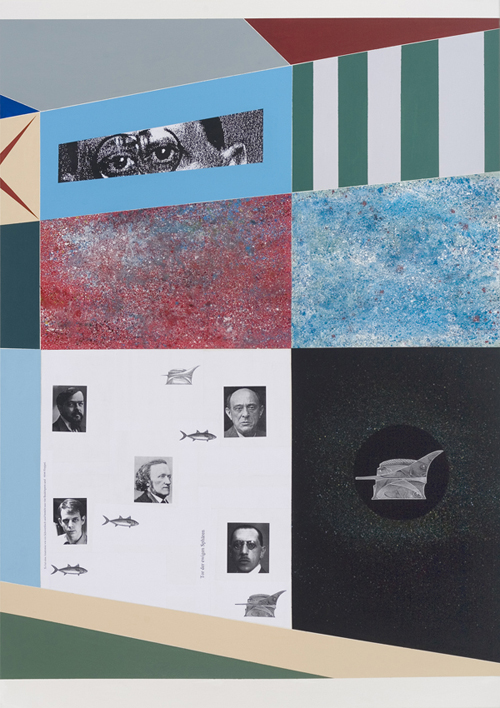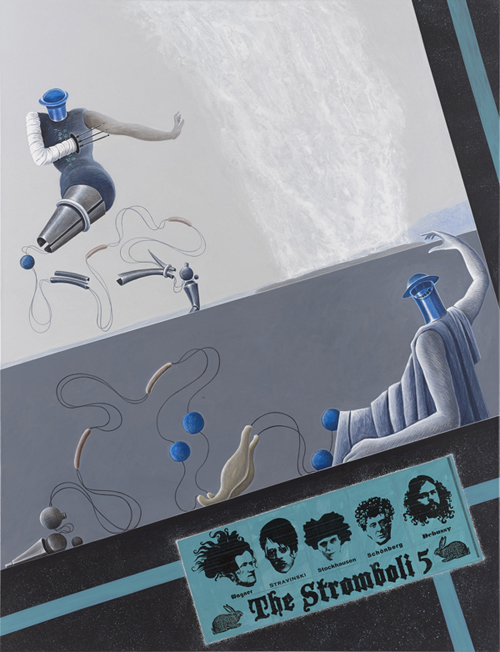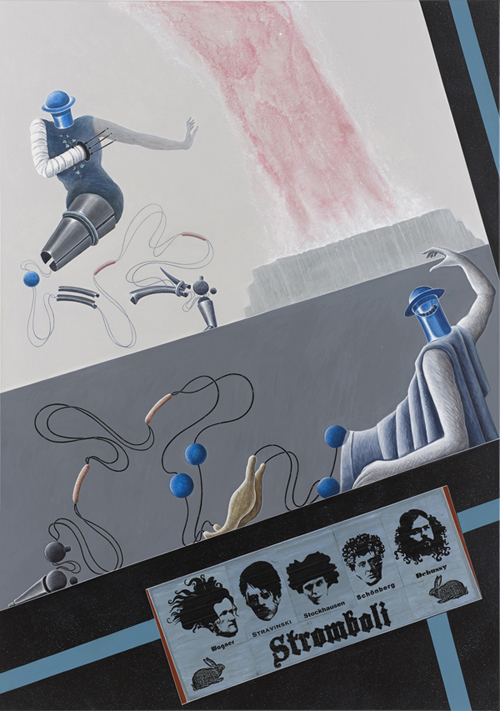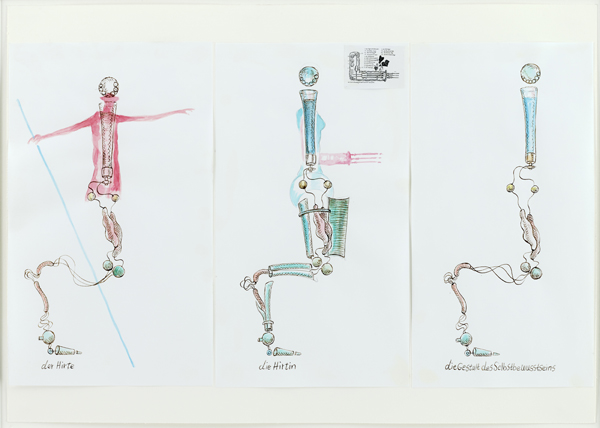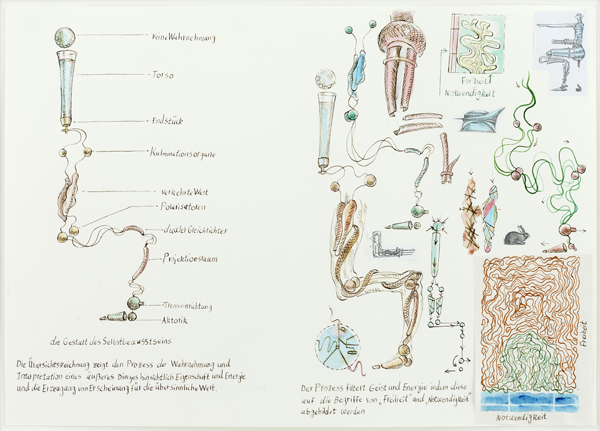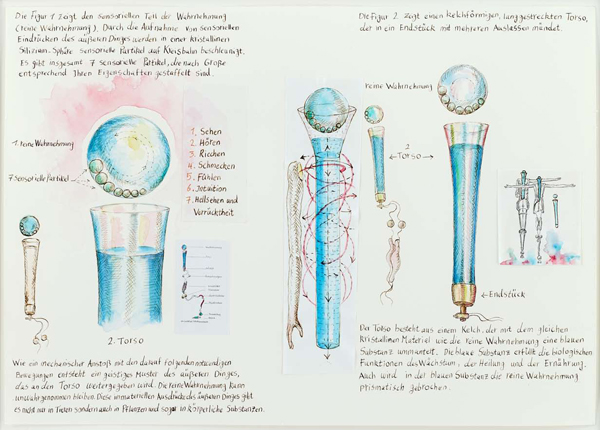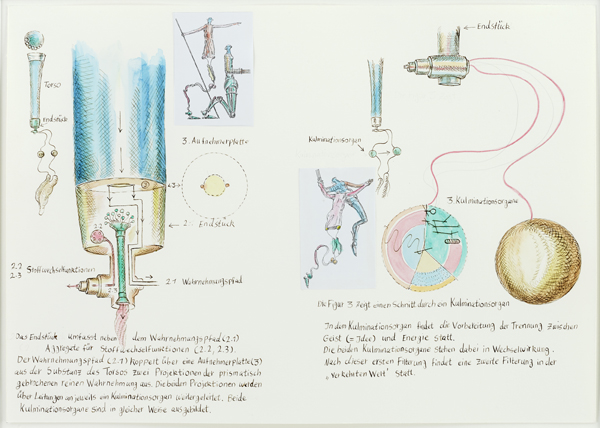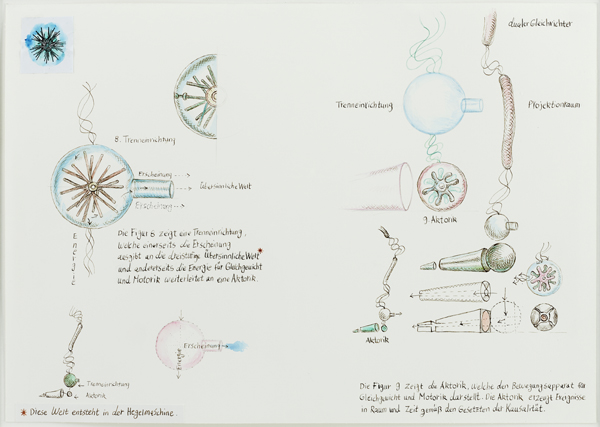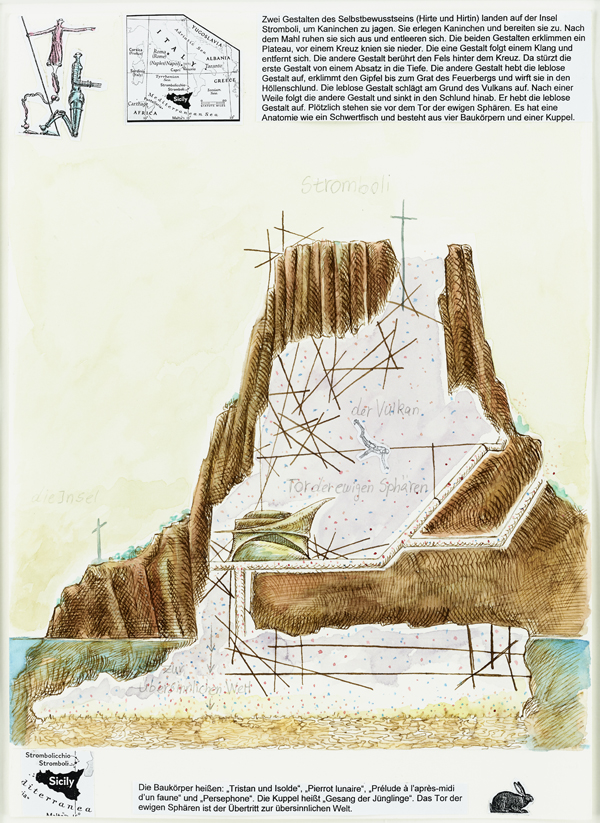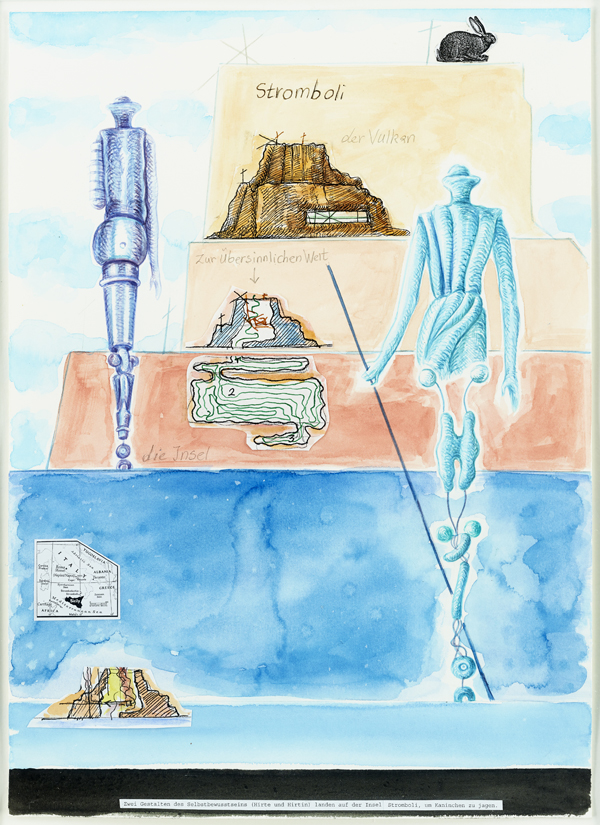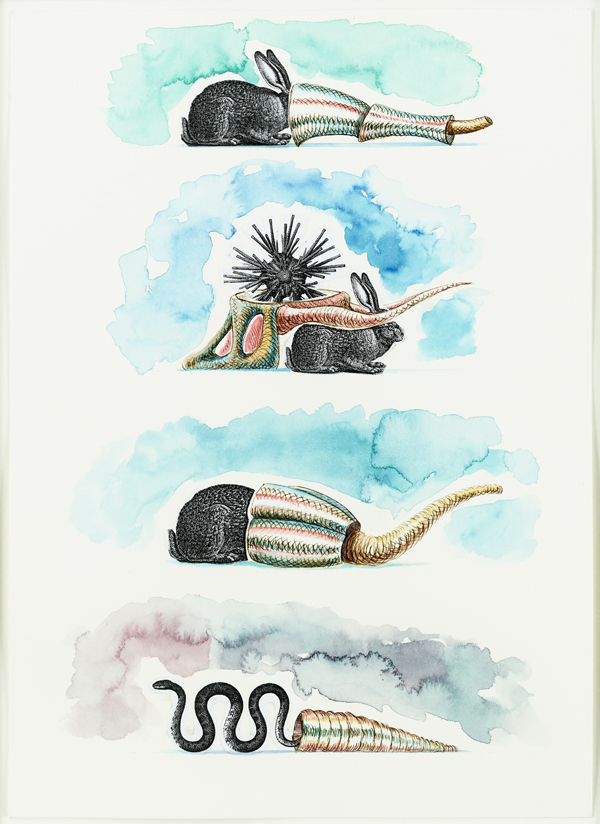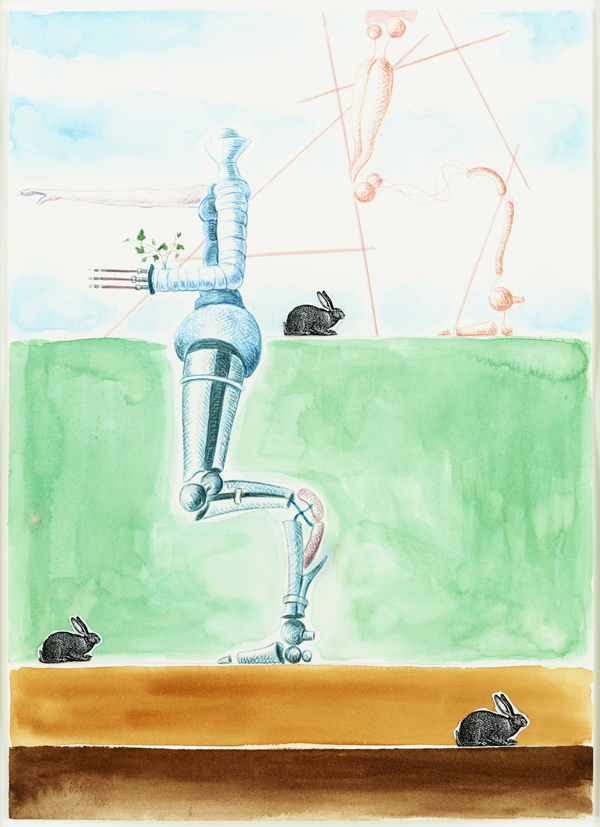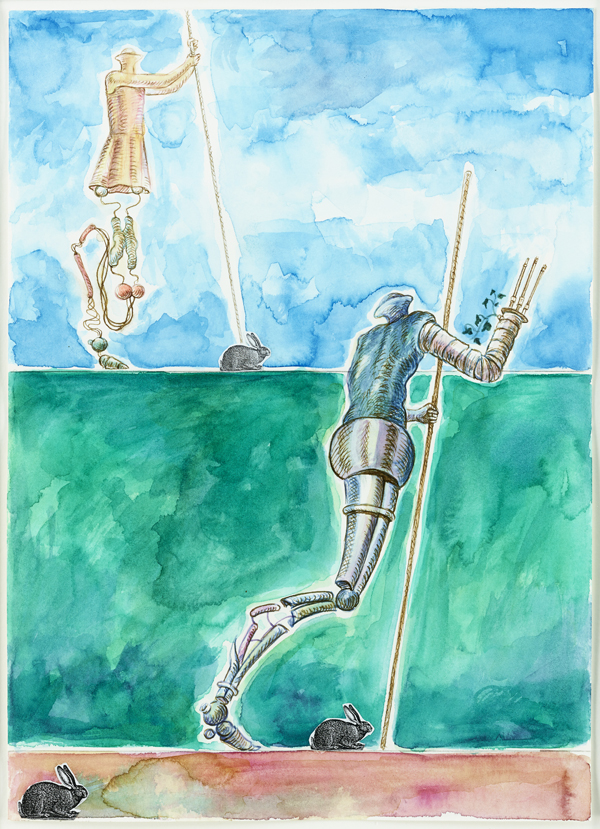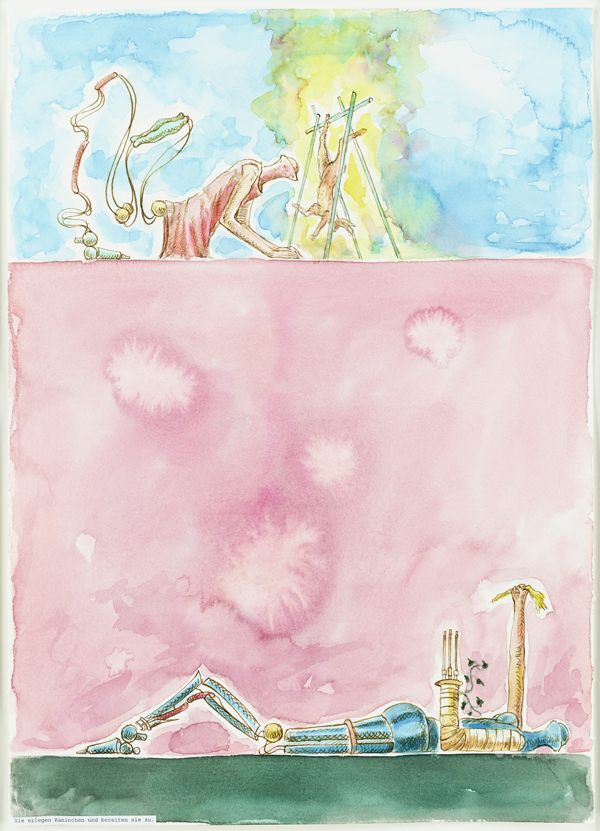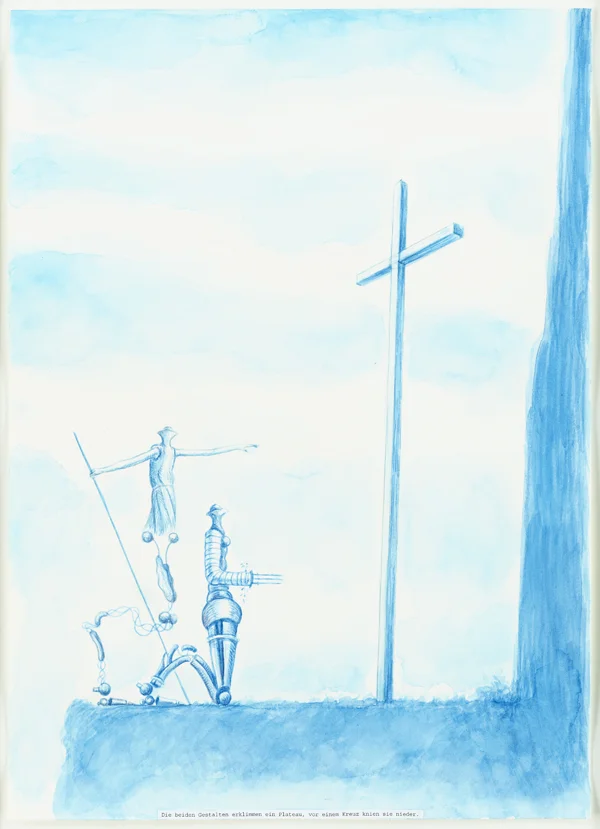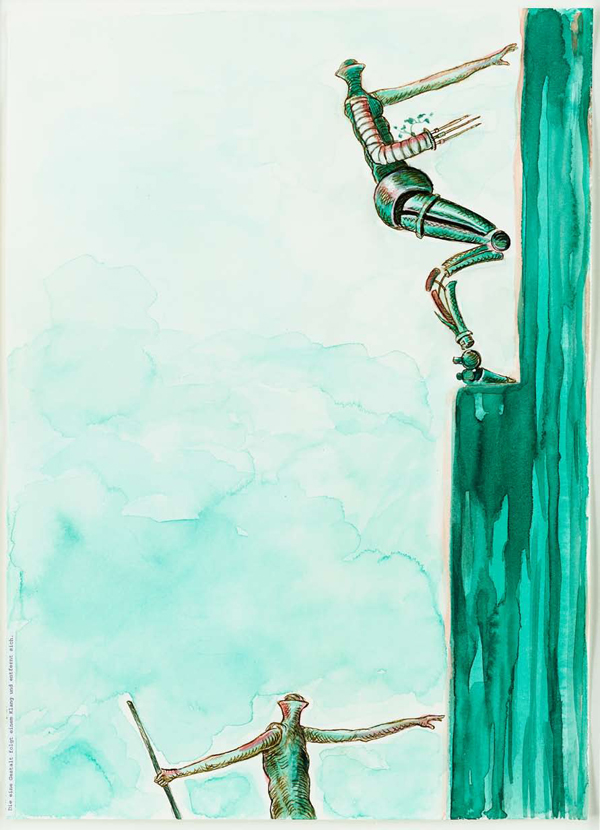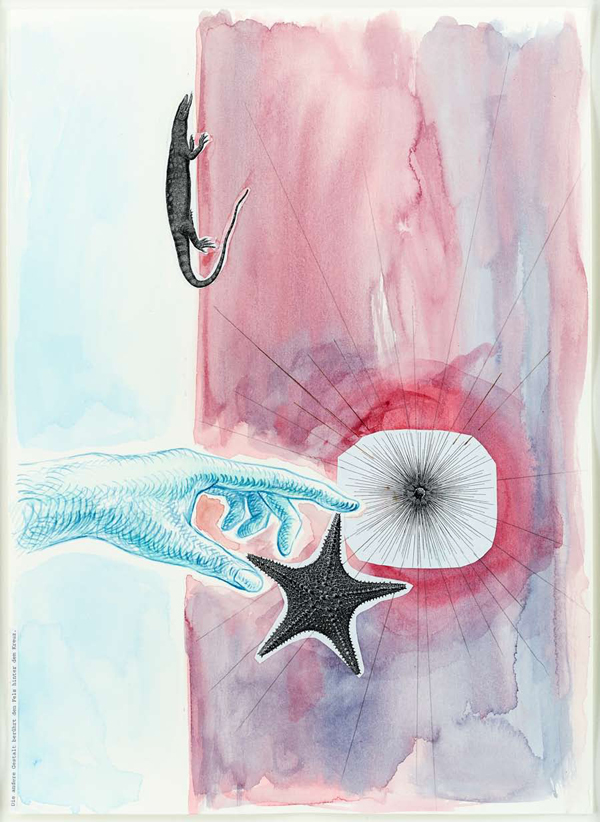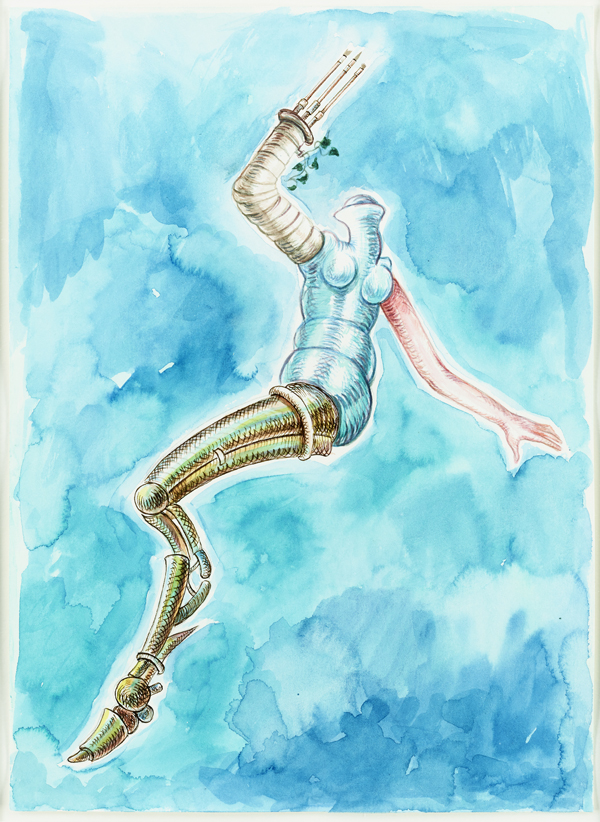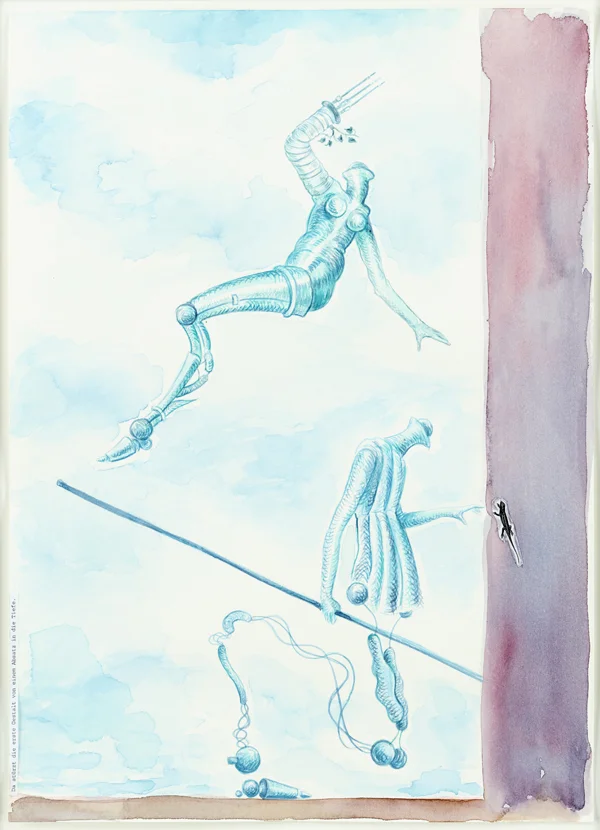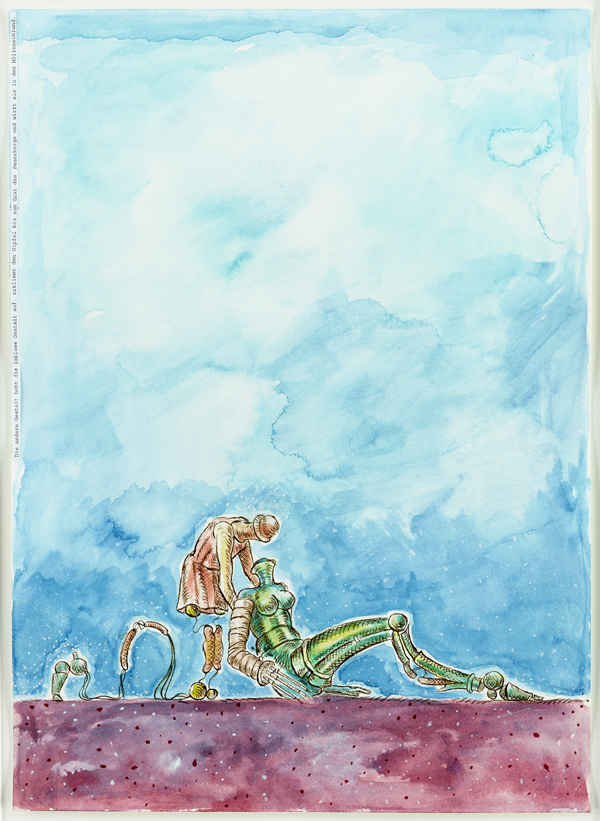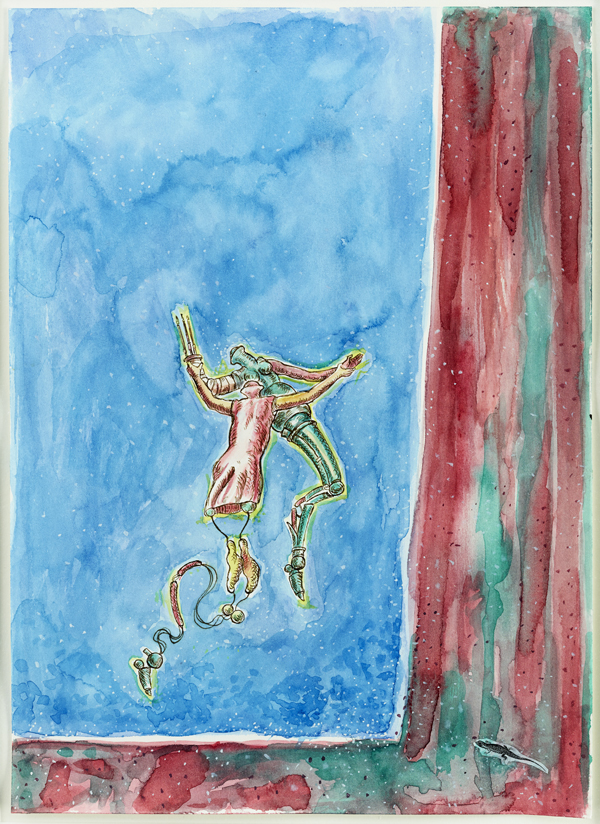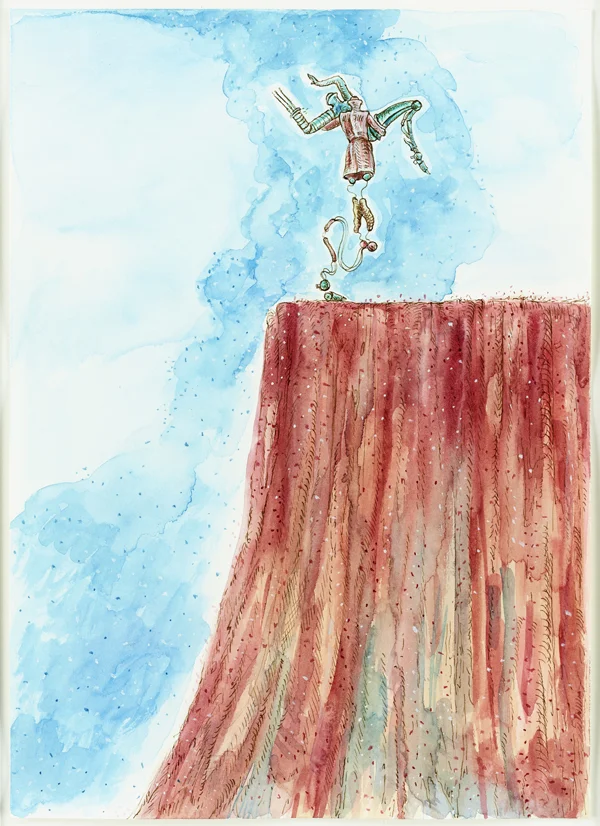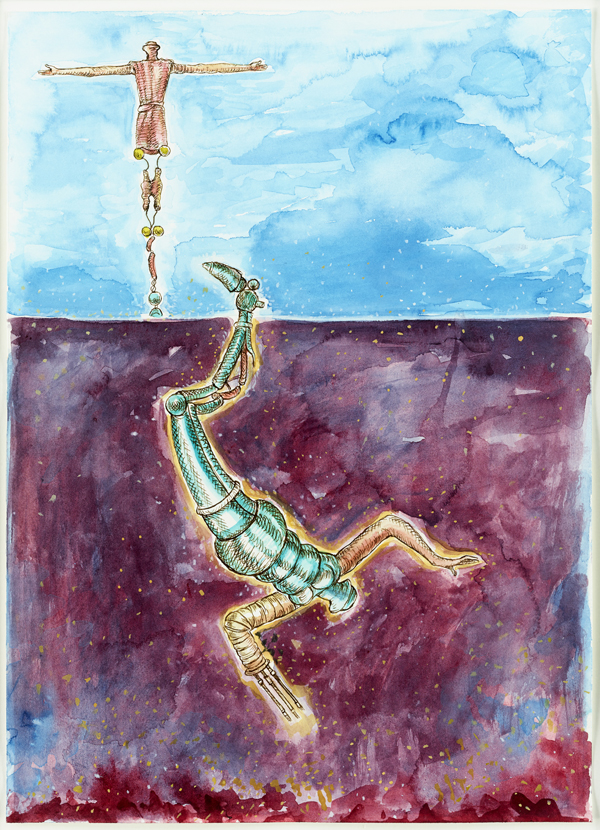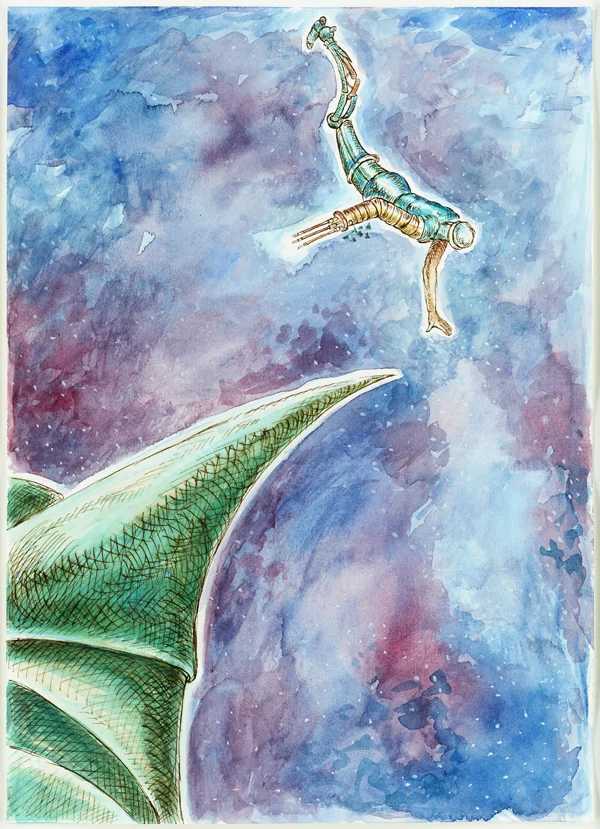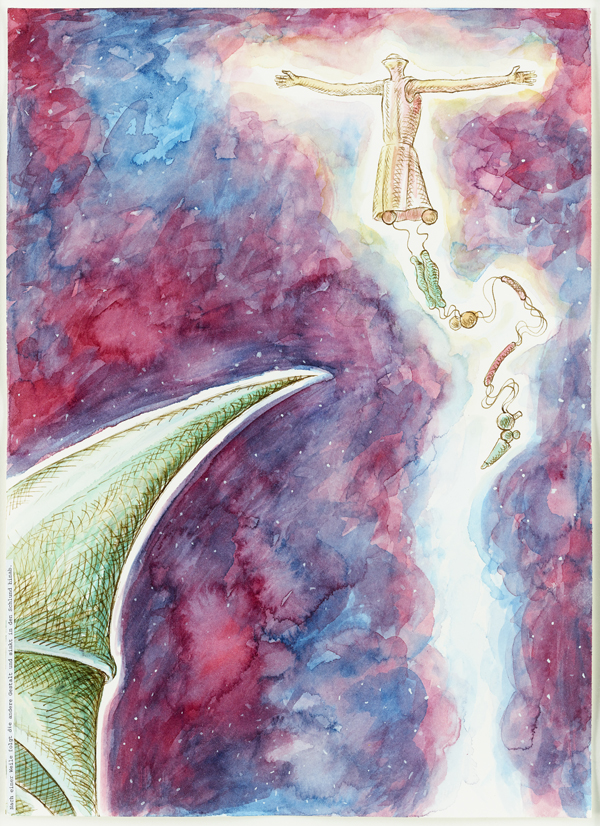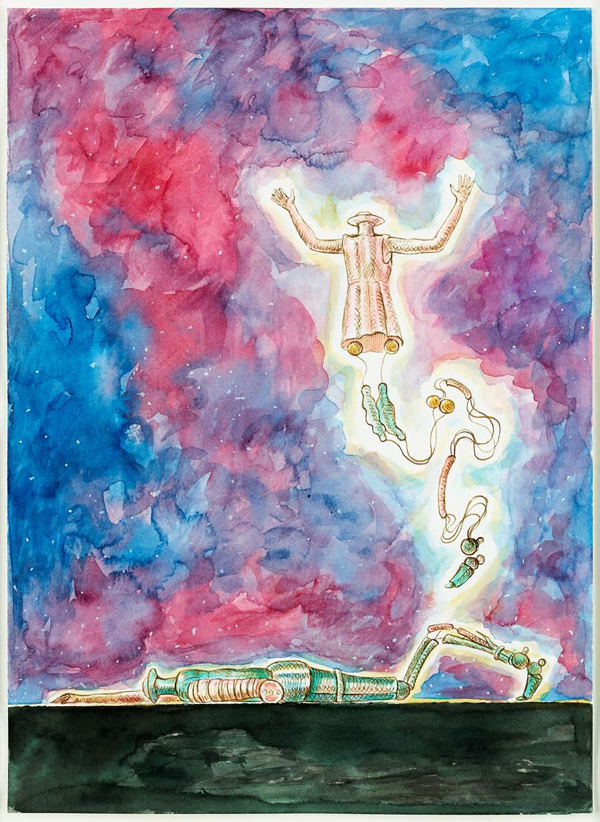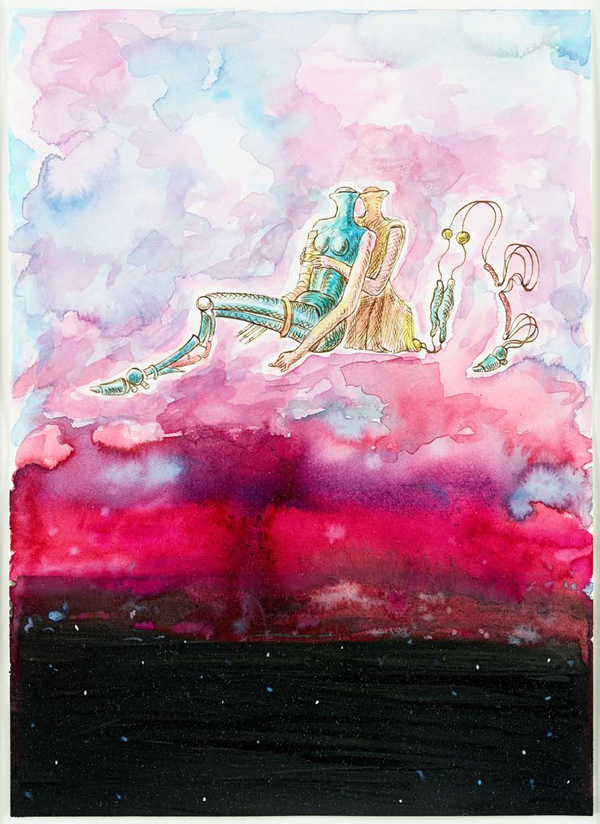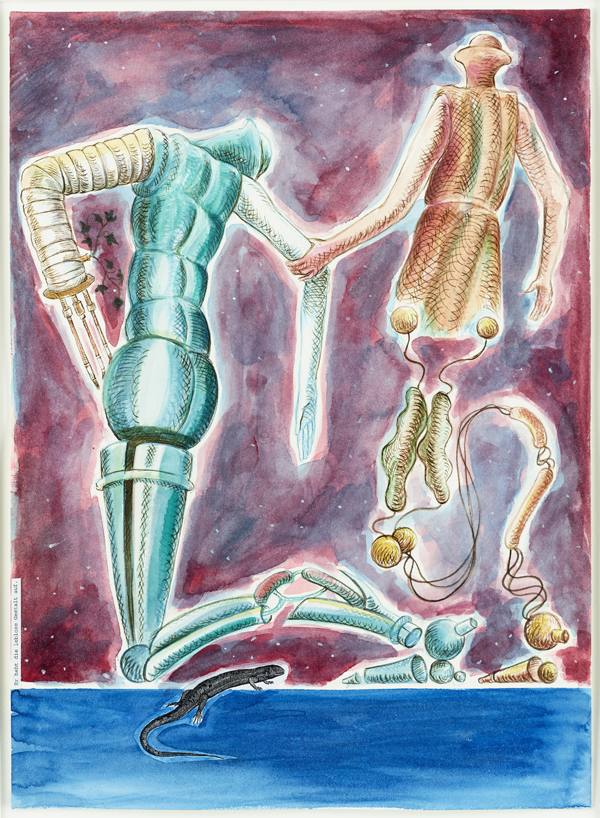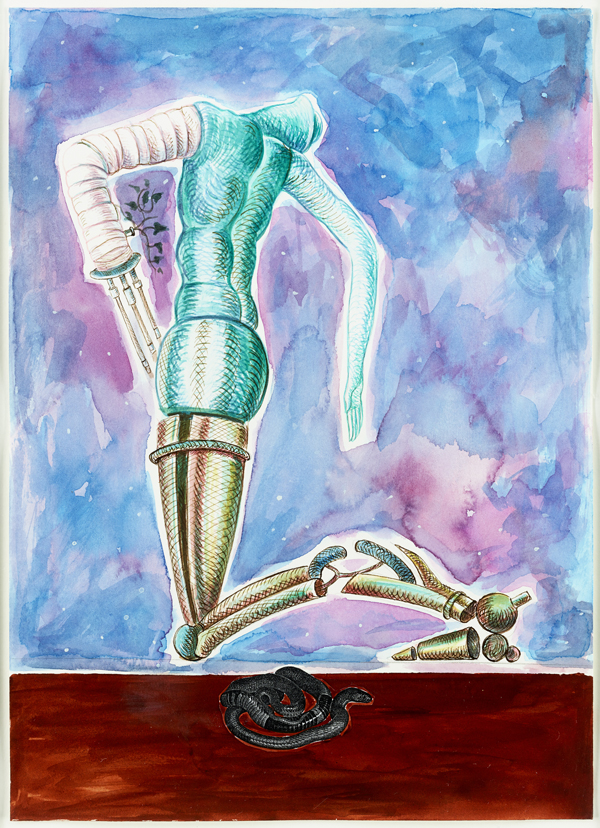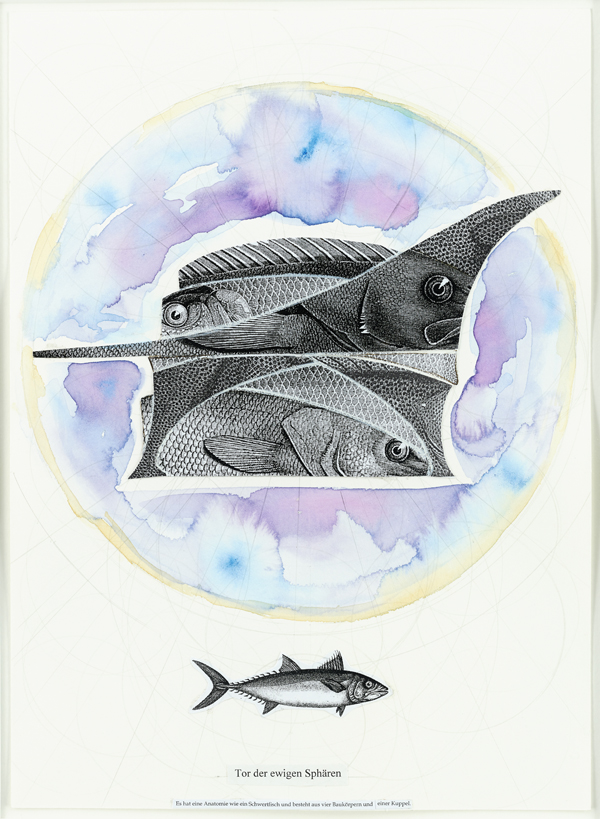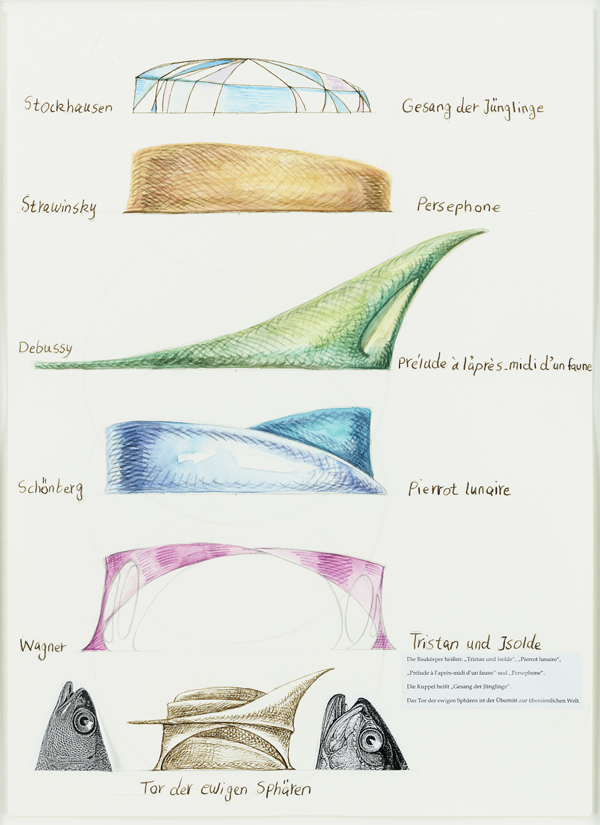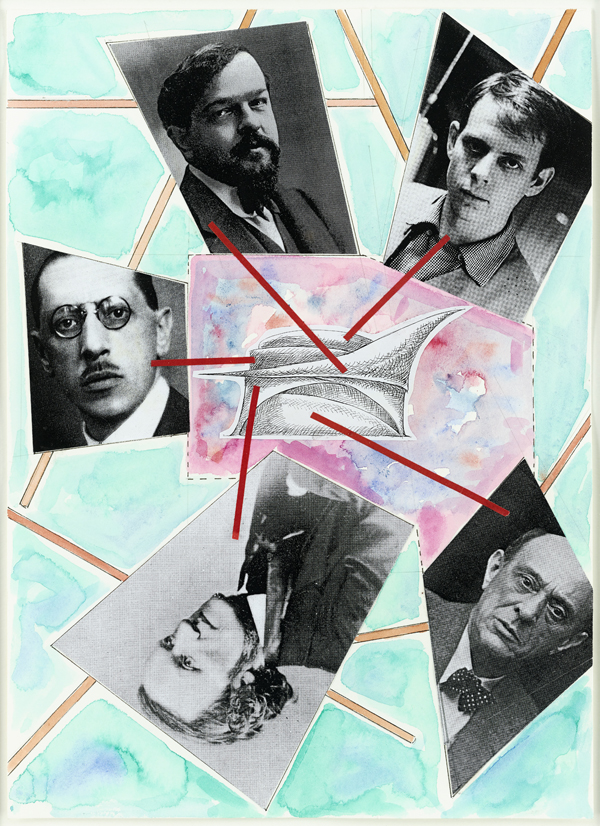Nader Ahriman
Works
Biography
Bibliography
Previous Shows
Nader Ahriman – Stromboli (2015)
Nader Ahriman – Meta-Kubismus (2014)
Nader Ahriman
Stromboli
Exhibition duration: March 5 – April 30, 2015
We are very pleased to announce an exhibition with the Iranian-German painter Nader Ahriman at Gerhardsen Gerner Oslo. This is the first solo exhibition of the artist’s work in Norway since his show in 1997 with Atle Gerhardsen’s gallery c/o in Oslo.
Ahriman’s representational paintings give shape to abstract philosophical concepts drawn from some of the most remarkable Western European philosophers – particularly G.W.F. Hegel’s idealism and the schools of thought that reacted to it during the 19th and 20th centuries – while investigating modernist movements in painting from Wassily Kandinsky to Barnett Newman and Jackson Pollock.
This exhibition, titled Stromboli, will feature twenty paintings and a series of drawings inspired by a passage from Friedrich Nietzsche’s Thus Spoke Zarathustra. A fantastical story is told by a crew that went ashore on the Italian island of Stromboli:
“There is an isle in the sea – not far from the Happy Isles of Zarathustra – on which a volcano ever smoketh; of which isle the people, and especially the old women amongst them, say that the eternal sphere is placed as a rock before the gate of the netherworld; but that through the volcano itself the narrow way leadeth downwards which conducteth to this gate”.
Ahriman’s works exhibit a highly accomplished use of painting by generating a fascinating balance between aesthetics and content, spirit and matter, figuration and abstract thought. His practice first draws inspiration from a philosophical idea, then develops its concept with the use of figurative representation and through his idiosyncratic choice of colors and hues.
The characters of his works, figures with strange anatomy, seem to act in atemporal and undefined spaces. The result is a puzzle of meanings, a palimpsest of metaphors that does not reveal the artworks’ sense in its entirety, but encourages the process of individual interpretation by the viewer.
Nader Ahriman, born 1964 in Shiraz (Iran), lives and works in Berlin. Ahriman's works have been presented in solo exhibitions at Kunstverein Hamburg (catalogue by Distanz), Kunstverein Freiburg (catalogue by Hatje Cantz), MACO Sur, Mexico City, and Kunsthalle Sankt Gallen.
Furthermore, his works have been included in group exhibitions at Kunst-Werke, Berlin, the Madison Museum of Contemporary Art, Temporary Kunsthalle, Berlin, MANIFESTA 7, Trento, the Walker Art Center, Minneapolis, Whitechapel Gallery, London, and Rupertinum, Salzburg.
For further information please contact Marina Gerner-Mathisen, Gerhardsen Gerner, Oslo: marina@gerhardsengerner.com
or Maike Fries, Gerhardsen Gerner, Berlin: T: +49-30-69 51 83 41F: +49-30-69 51 83 42, maike@gerhardsengerner.com
or visit our website at http://www.gerhardsengerner.com
- - - -
Stromboli – The Narration
The two gestalts of self-consciousness (shepherd and shepherdess) landing on the island of Stromboli to hunt rabbits. The two gestalts of self-consciousness (shepherd and sheperdess) hunting rabbits. The two gestalts of self-consciousness (shepherd and shepherdess) preparing the rabbits to eat. The two gestalts of self-consciousness (shepherd and shepherdess) rest after the meal and relief themselves. The two gestalts of self-consciousness (shepherd and shepherdess) climb up to a plateau and kneel before a cross. The one gestalt of self-consciousness (shepherd) touching the rock behind the cross. The other gestalt of self-consciousness (shepherdess) follows a sound behind the cross and goes off. The first gestalt of self-consciousness (shepherdess) then falls from a ledge into the depths. The other gestalt of self-consciousness (shepherd) lifts up the lifeless gestalt of self-consciousness (shepherdess) and climbs up to the edge of the volcano. There, the one gestalt of self-consciousness (shepherd) throws the other gestalt of self-consciousness (shepherdess) into the abyss of hell. The lifeless gestalt of self-consciousness (shepherdess) hits the bottom of the volcano. The other gestalt of self-consciousness (shepherd) follows and sinks into the abyss. The one gestalt of self-consciousness (shepherd) lifts up the other lifeless gestalt of self-consciousness (shepherdess). The two gestalts of self-consciousness (shepherd and shepherdess) stand before the gate of the eternal spheres. Its anatomy resembles a swordfish and is comprised of four buildings and a dome. The buildings are called "Tristan and Isolde", "Pierrot lunaire", "Prélude à l'après-midi d'un faune" and "Perséphone", the dome "Song of Youths". The gate of the eternal spheres is the threshold to the super-sensuous world.
The Gestalt of Self-Consciousness (after Hegel)
The diagrams show the process of perception and interpretation of an external property and energy, as well as the generation of appearance for the super-sensuous world.
The first figure (Figur 1) shows the sensuous component of perception (pure perception). Through the absorption of sensuous impressions from an external object, sensuous particles are accelerated into an orbit in a crystalline silicon sphere. Altogether there are seven particles in sizes staggered according to their properties: seeing, hearing, smelling, tasting, feeling, intuition, clairvoyance and madness.
Like a mechanical trigger with deterministically following movements, a mental model of external objects arises, which is passed on to the torso. Pure perception can remain unperceived. These intangible expressions of external objects occur not only in animals, but also in plants and even in bodily substances.
The second figure (Figur 2) shows a goblet-shaped stretched-out torso, which opens out into an end piece with multiple omissions. The torso consists of a goblet, which with the same crystalline material as pure perception surrounds a blue substance. The blue substance fulfills the biological function of growth, healing and nourishment. It is also in the blue substance that pure perception is split prismatically.
The end piece comprises, besides the channel of perception (2.1), aggregates for metabolic functions (2.2, 2.3). The channel of perception (2.1) extracts two projections of the prismatically split pure perception with an absorption plate (3) from the substance of the torso. Each projection is continued along a pathway to a culmination organ. Both culmination organs are depicted in the same way.
The third figure (Figur 3) shows a sectional view through a culmination organ. In the culmination organ the preparation of the separation of spirit and energy takes place. The two culmination organs are thus in a state of interaction. After this first filtering, a second filtering in the "inverted world" takes place.
The fourth figure (Figur 4) shows the "inverted world" in a visualization for a process of purification, clarification of thought on the way to absolute knowledge, which leads to the abolition of concreteness. The reversal is an inversion of the world in the sense of inequality of equals, though not the simple opposite of appearance, but a reflection in itself and not an antithesis of something else.
Mind is characterized by freedom, but not only freedom, since that would be mere randomness - it is also necessity. Nature is characterized by necessity; it is not only necessity, however, but also freedom, since it is not an inactive being but at the same time a becoming. The process filters mind and energy in projecting them onto the concepts of "freedom" and "necessity".
The fifth figure (Figur 5) shows polarizers, which absorb and transform the projections to freedom and necessity from the "inverted world" under the influence of experience.
The sixth figure (Figur 6) shows the dual rectifier, in which the separation into pure spirit and energy is carried out.
The seventh figure (Figur 7) shows the internal projection room, in which the appearance takes place and is separated from energy. The mind determines the characteristics of the appearance. The appearance is dematerialized and freed from space and time. On leaving the projection room, appearance and energy are directed onwards to a separation device.
The eighth figure (Figur 8) shows a separation device, which on one side issues the appearance to the three-level super-sensuous world, and on the other side channels the energy for balance and coordination into an actuator.
The ninth figure (Figur 9) shows the actuator, which represents the movement apparatus for balance and coordination. The actuator generates events in space and time according to the laws of causality.

